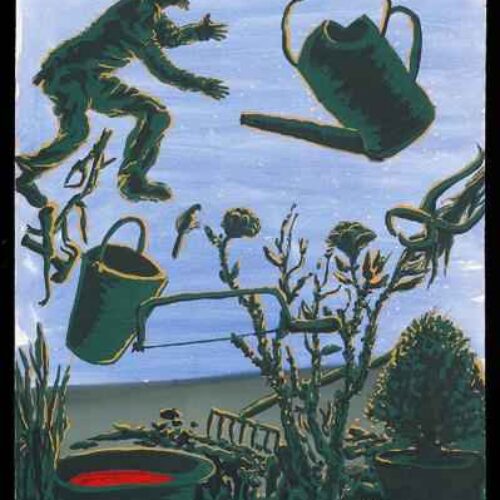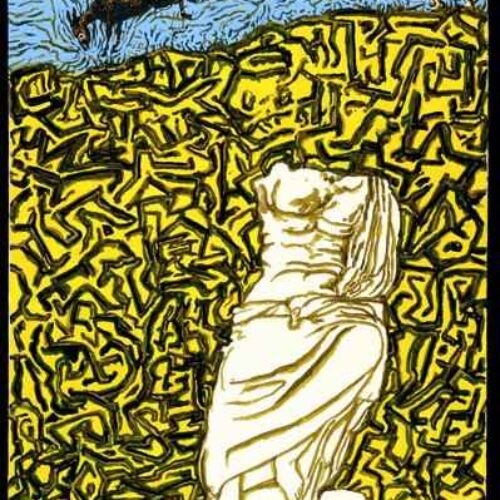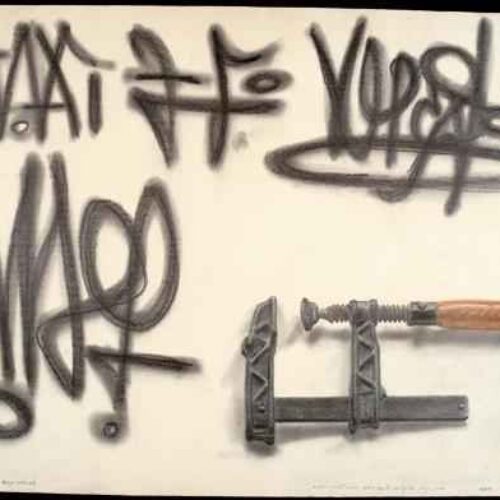Avishay Ayal’s exhibition at the Mishkan Le’Omanut, Museum of Art, Ein Harod, Land of Oil: Nine Series of Works on Paper, 1970-1992, brings together under one title an ostensibly-idyllic collective identity of Eretz-Israel and a retrospective personal context. It spans more than hundred works on paper created in the course of more than twenty years of artistic work.
The exhibition sheds a new light on Ayal’s oeuvre, as a gaze that combines movement from the outside in and from the inside out, instilling his work with meanings charged on both the private and the collective levels. It focuses the discussion on a unique perspective pertaining to his local identity, which is strewn with a dialectic of duality: closeness and remoteness, belonging and foreignness – dimensions that have existed in his work from the very outset.
A retrospective perusal reveals that Ayal’s dialogue with a local identity and a local image has not primarily departed from a dialogue with a “land of oil” in the sense of early Israeli painting, such as Israel Paldi’s, and certainly has not endeavored to backshape, through that dialogue, a generalized, stable, “local” identity. The overall context of the exhibition seems to present his work as confronting, first and foremost, elements derived from mass-distributed pseudo-naive materials and mobilized imagery, such as an illustration appearing on an oil can manufactured by Shemen Ltd., touristy postcards by Palphot Ltd., press photographs extracted from the current affairs and finance sections, and inscriptions in fire from the Zionist youth movements’ folklore.
By various graphic means and diverse styles, Ayal deconstructed elements and components of the overall pictorial frame and introduced “noises” into the system, such as blurring and erasure lines that signify a type of technical distortion in the printing process of the postcards and photographs. The deliberate splitting, fragmentation, and disruption subverted the distinction between the details and the total image, between object and background, word and sound, eroding the signifying cohesion of the whole as carrying a distinctive declarative message or unit of meaning. The splitting and deconstruction interfered with the illusion of a generalized local identity borne by the original image, thus enabling the introduction of internalized strata of consciousness barely addressed until recently as part of the discussion of Israeli art.
The exhibition curator, Sorin Heller, traces the chronological evolution of Ayal’s work from the early 1970s to the early 1990s, referring to its unique place in the context of Israeli art. In his essay he outlines aspects in Ayal’s work that link themes pushed out of the collective consciousness, such as detachment, immigration, and the figure of the Arab, highlighting their affinities with intricate biographical and social relationships in Ayal’s oeuvre: “The exhibition acquires the dimension of a “journey” between stations in time. At each station themes pertaining to identity and place are “examined” and “deconstructed.” The concepts home, family, adoptive (and adopted) parents, place, journey, immigration, language, work, and past – all resonate from biographical experiences and personal experience, while concurrently alluding to national phenomena.”
Avishay Ayal
Land of Oil
Curator: Sorin Heller
June-September 2004





